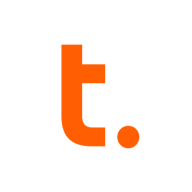

Quest SharePlex and Teradata operate in the data management category. Quest SharePlex has an advantage in pricing and support, whereas Teradata is often preferred for its comprehensive feature set.
Features: Quest SharePlex is valued for its robust data replication, ensuring minimal downtime and high data availability. It offers efficient data integration across various databases. Teradata stands out for its scalable data warehousing solutions, advanced analytics, and the ability to handle complex queries and large datasets efficiently.
Room for Improvement: Quest SharePlex might improve in handling more complex analytics tasks and enhancing scalability options. It could also offer more advanced query optimization tools. Teradata could enhance its ease of deployment and simplify its user interface. Additionally, reducing setup complexities and improving cost-efficiency would be beneficial.
Ease of Deployment and Customer Service: Quest SharePlex offers a straightforward deployment process and reliable customer service, supporting quick integration into existing infrastructures. Teradata, though more complex to deploy due to its powerful infrastructure, balances this with strong support services, making it suitable for more complex environments.
Pricing and ROI: Quest SharePlex provides a cost-effective solution with clear ROI through efficient data replication and lower initial costs. Teradata, while having higher setup costs, justifies these with advanced capabilities, offering significant long-term ROI for businesses requiring extensive data processing and analytics.

SharePlex database replication empowers your organization to achieve its database goals now and into the future. Make use of built-in monitoring, conflict resolution, data comparison and synchronization capabilities backed by award-winning support.
Teradata is a scalable data analytics platform designed to meet enterprise demands for large-scale data management and processing, focusing on performance, scalability, and security for complex query executions.
As a leading data warehousing solution, Teradata integrates advanced analytics enabling organizations to derive insights from massive datasets. It supports high-volume data workloads with its architecture optimized for analytical queries. Users benefit from its robust scalability, allowing seamless expansion as data grows. Teradata's SQL engine is compatible with a wide range of data types, ensuring flexibility in data analysis. With advanced security measures, it protects sensitive data across various environments, providing peace of mind to users handling critical information.
What are the most important features of Teradata?Teradata is widely used in industries like finance, telecommunications, and healthcare, where data-driven decisions are critical. Companies leverage its robust analytics capabilities to enhance customer experiences, streamline operations, and ensure compliance with regulatory requirements. In these sectors, quick access to data insights can significantly impact competitive advantage.
We monitor all Data Integration reviews to prevent fraudulent reviews and keep review quality high. We do not post reviews by company employees or direct competitors. We validate each review for authenticity via cross-reference with LinkedIn, and personal follow-up with the reviewer when necessary.